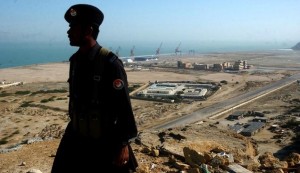By: Timothy Aderman
The Enhanced Partnership with Pakistan Act of 2009 authorized the tripling of U.S. aid to Pakistan between fiscal years 2010 and 2014. During this period, only 2014 fell below $1,000 million in requested funds. Aid was earmarked for economic support, USAID projects, narcotics and law enforcement support, and national security activity.
While this massive amount of U.S. aid poured into Pakistan, China chose a different route on how to view Pakistan. In 2011, China began footing the majority of the bill to begin constructing Pakistan’s first deep water port in Gwadar. With Chinese funds and expertise, Pakistan has turned the tiny fishing village of Gwadar into a strategic port. If leveraged properly, Gwadar Port will greatly expand Chinese global influence.
A recent agreement with Pakistan will make China the custodian of the port for a 40 year period. In return, China will pour $46 billion in both developing new infrastructure and expanding current infrastructure.
While building the port is a large undertaking, the largest project may be the creation of a super highway spanning over 1,800 miles from Gwadar Port to the Chinese border town of Kashgi. This highway will include oil pipelines and railways. With access to the Arabian Sea, and oil tankers coming out of the Strait of Hormuz, China will be able to reap great economic gains from their investment.
Gwadar Port may also be used as a resupply and refueling point for Chinese naval vessels. This is strategically important, particularly as China continues its economic expansion in Africa.
The contentious relationship between the U.S. and Pakistan has not been soothed by an outpouring of aid. Gwadar Port illustrates how China has strayed from a foreign aid model that the U.S. tried to implement to a more natural business model that benefits both China and Pakistan greatly. As Gwadar Port and its connecting super highway emerge, the U.S.’ economic and political influence in Pakistan will wane.
Photo Credit: thehindu.com

